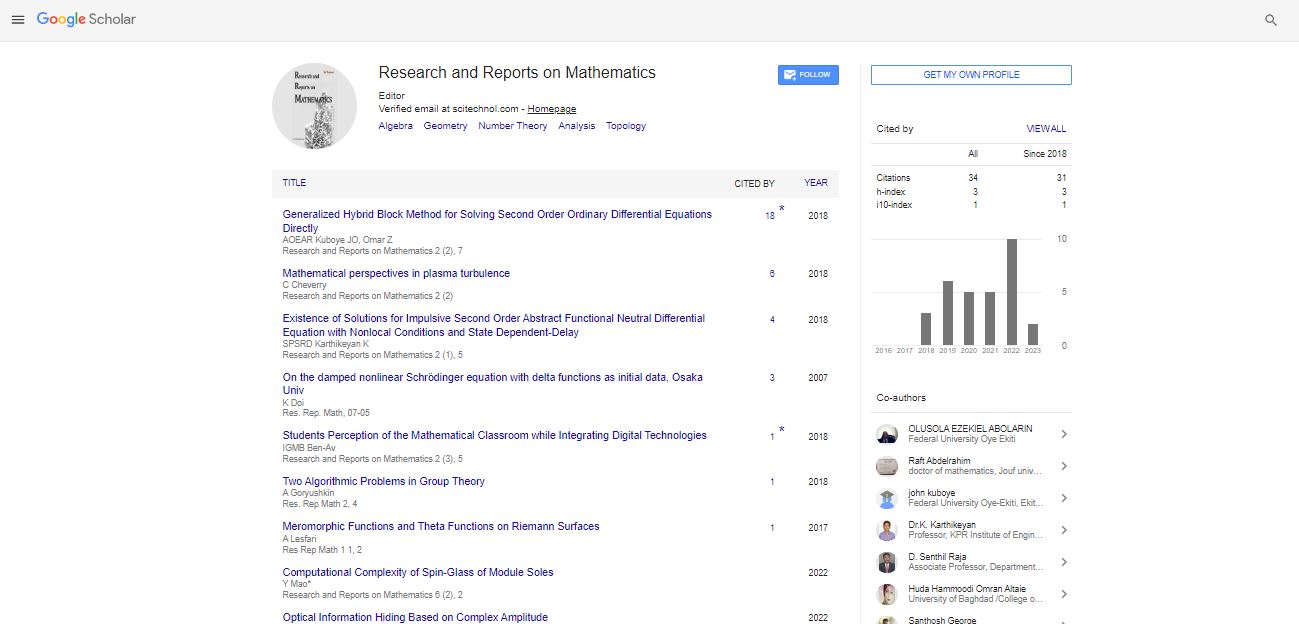Opinion Article, Met Mater Int Vol: 8 Issue: 1
Magnetic Metal lore: Probing the Depths of Metals' Susceptibility
Philip Ivanov*
1Department of Chemistry, University of Edinburgh, David Brewster Road, Edinburgh, Scotland, United Kingdom
*Corresponding Author: Philip Ivanov,
Department of Chemistry, University of
Edinburgh, David Brewster Road, Edinburgh, Scotland, United Kingdom
E-mail: philip.ivan@ed.ac.uk
Received date: 24 February, 2024, Manuscript No. RRMT-24-136631;
Editor assigned date: 28 February, 2024, PreQC No. RRMT-24-136631 (PQ);
Reviewed date: 14 March, 2024, QC No. RRMT-24-136631;
Revised date: 21 March, 2024, Manuscript No. RRMT-24-136631 (R);
Published date: 28 March, 2024, DOI: 10.4172/Rrmt.1000194
Citation: Ivanov P (2024) Magnetic Metal lore: Probing the Depths of Metals' Susceptibility. Met Mater Int 8:1.
Description
The magnetic susceptibility of metals is a fundamental property that influences their behavior in magnetic fields, making them essential components in various scientific, industrial, and technological applications. This study provides an in-depth assessment of the magnetic susceptibility of metals, covering its underlying principles, measurement techniques, practical applications, and implications in diverse fields. From ferromagnetic to paramagnetic materials, this review elucidates the significance of magnetic susceptibility in materials science, physics, geology, and engineering. The magnetic susceptibility of metals is a measure of their response to an external magnetic field, reflecting their intrinsic magnetic properties. This section introduces the concept of magnetic susceptibility and its relevance in understanding the behavior of metals in magnetic fields.
It outlines the objectives of the research work, which aims to provide a comprehensive overview of the principles, measurement methods, and applications of magnetic susceptibility in metals. Magnetic susceptibility is a material property that characterizes the degree of magnetization induced by an external magnetic field. This section delves into the theoretical principles underlying magnetic susceptibility, including diamagnetic, paramagnetic, and ferromagnetic behavior. It discusses the role of electronic structure, spin alignment, and magnetic domains in determining the magnetic properties of metals, highlighting the differences between various types of magnetic materials. Accurate measurement of magnetic susceptibility is essential for understanding the magnetic behavior of metals and materials.
It explores common techniques used to measure magnetic susceptibility, such as Vibrating Sample Magnetometer (VSM), SQUID magnetometer, and Faraday balance methods. It discusses the principles, instrumentation, and experimental procedures involved in each technique, emphasizing their advantages, limitations, and applications in materials characterization. The magnetic susceptibility of metals finds diverse applications in materials science, ranging from magnetic materials characterization to Magnetic Resonance Imaging (MRI) in medical diagnostics. This section examines the role of magnetic susceptibility in magnetic materials research, magnetic resonance spectroscopy, and Magnetic Particle Imaging (MPI).
It discusses how variations in magnetic susceptibility can provide insights into material composition, structure, and magnetic properties, enabling applications in materials design, synthesis, and characterization. Magnetic susceptibility measurements are widely used in geophysics and environmental science for characterizing geological formations, soil properties, and environmental contaminants. This section explores the application of magnetic susceptibility in paleomagnetism, mineral survey, and environmental monitoring. It discusses how variations in magnetic susceptibility can reflect changes in geological processes, sedimentary environments, and pollution sources, offering valuable insights into Earth's magnetic history and environmental health. In engineering and industry, magnetic susceptibility measurements are employed for quality control, material testing, and process optimization.
This section examines the use of magnetic susceptibility in metallurgy, magnetic materials manufacturing, and magnetic separation techniques. It discusses how magnetic susceptibility measurements can help assess material purity, identify magnetic impurities, and optimize manufacturing processes, contributing to the development of advanced materials and industrial applications. Advancements in magnetic susceptibility measurement techniques and applications continue to drive research in materials science, physics, and engineering. This section discusses current trends and future directions in magnetic susceptibility research, including the development of high-sensitivity measurement techniques, the assessment of novel magnetic materials, and the integration of magnetic susceptibility measurements with other analytical techniques. It emphasizes the interdisciplinary nature of magnetic susceptibility research and its potential for addressing emerging challenges and opportunities in diverse fields.
Conclusion
The magnetic susceptibility of metals plays a vital role in understanding their magnetic behavior and has broad implications across various scientific, industrial, and technological domains. This study has provided a comprehensive overview of the principles, measurement techniques, applications, and implications of magnetic susceptibility in metals. By elucidating the significance of magnetic susceptibility in materials science, physics, geology, and engineering, we can advance our understanding of magnetic materials and harness their potential for innovative applications and discoveries. This Study offers a thorough probe of the magnetic susceptibility of metals, covering its principles, measurement techniques, applications, and implications in diverse fields. It underscores the importance of magnetic susceptibility in materials science, physics, geology, and engineering, highlighting its role in advancing research and technological innovation.
 Spanish
Spanish  Chinese
Chinese  Russian
Russian  German
German  French
French  Japanese
Japanese  Portuguese
Portuguese  Hindi
Hindi 